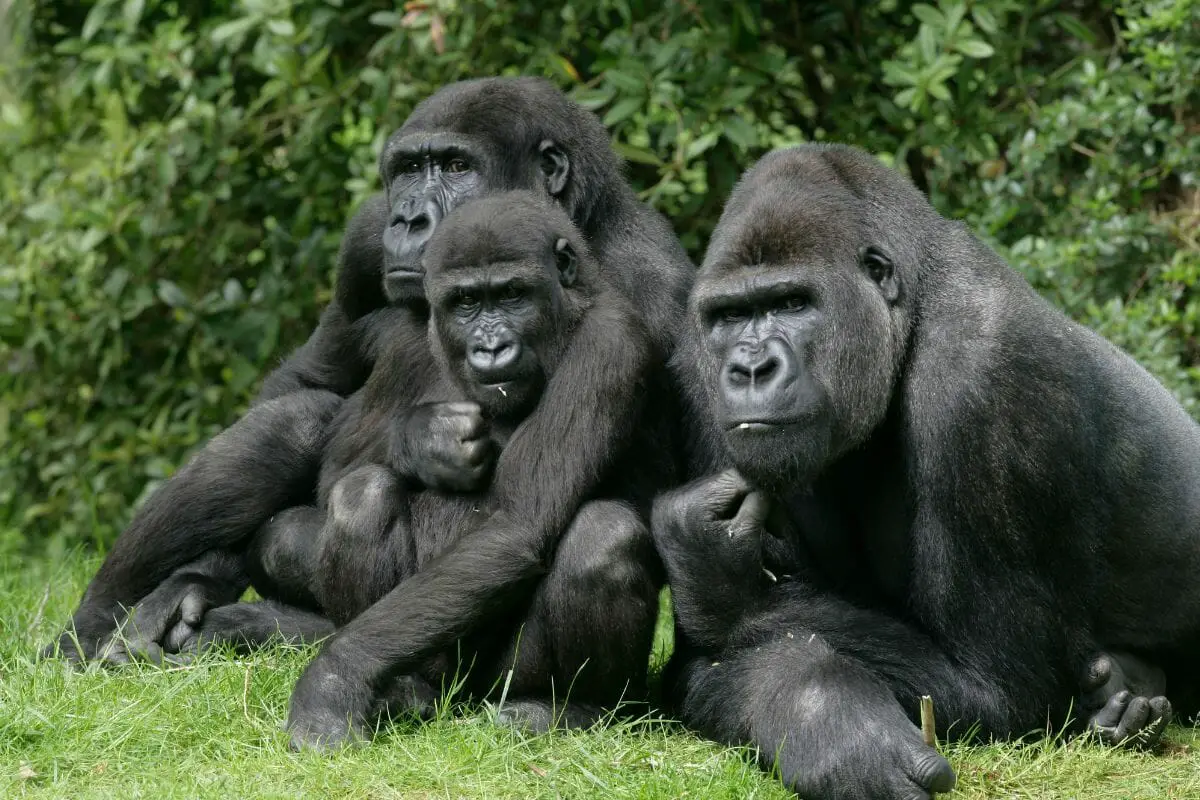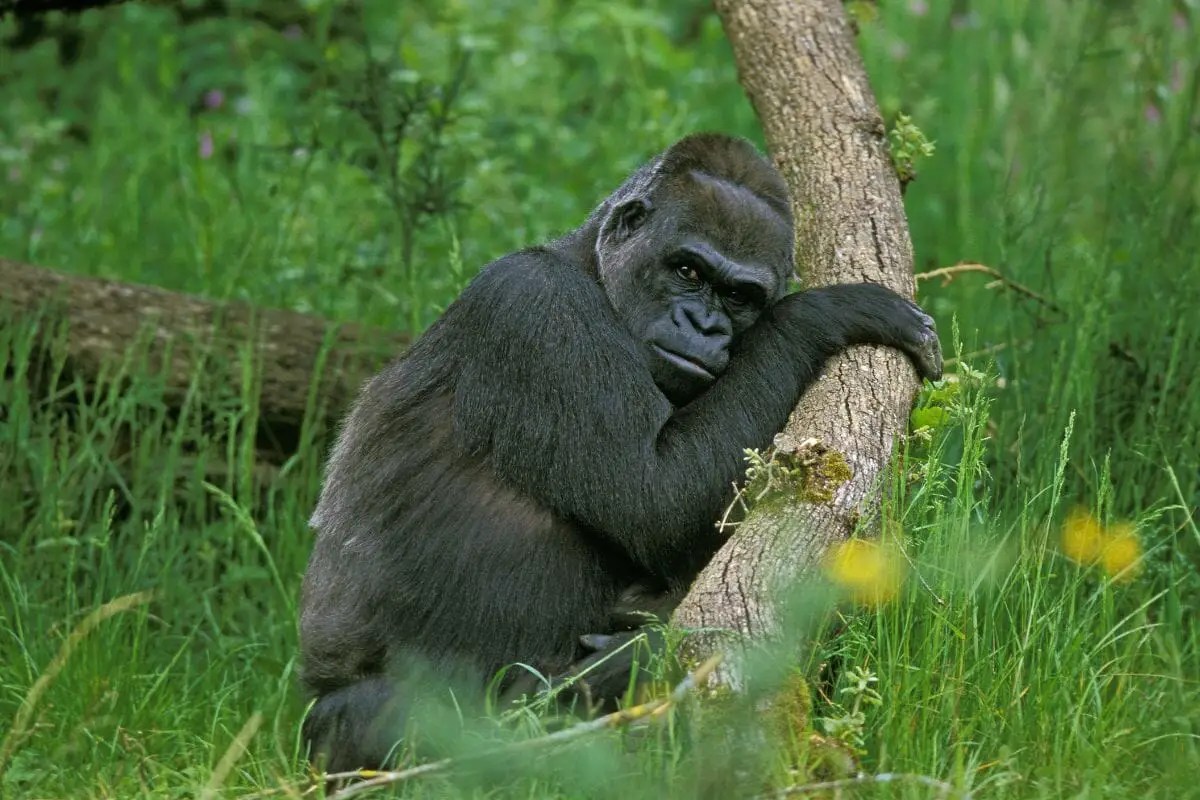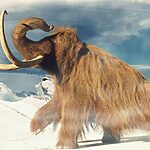The world’s largest living primate is the gorilla. These creatures are mostly ground-dwelling herbivores. The woodlands of Central Africa are home to gorillas.

With 95 to 99 percent of their DNA being shared by Homo sapiens, these primates are closely linked to humans.
The eastern and western gorillas are the two species of gorillas. There are two subspecies for each species.
This article will discuss the six different types of gorillas and why they are so different from one another.
It might be difficult to categorise the several gorilla species that exist. This is due to the fact that gorillas come in two different species: western and eastern gorillas.
There are two subspecies of each of these species, for a total of four subspecies.
The varieties of gorillas are one of the crucial aspects of gorillas which we need to comprehend, and this article focuses on this.
You will gain knowledge of the several gorilla species, as well as their distinguishing characteristics and features, among many other things.
1. Western Gorillas

The Gorilla genus contains several species, but the western gorillas are the most prevalent.
These creatures can have a yellowish forehead and a greyish or brownish coat. The brighter colouring and overhanging point on the gorillas’ noses set them apart from eastern gorillas.
This species’ average height for males and females is 135 cm and 155 cm, respectively. In groups of two to twenty, there is at minimum one male, a number of females, and young gorillas.
Diets of western gorillas heavy in fibre, including twigs, foliage, flowers, bark, fruits, etc., are consumed by the animals.
On the IUCN Red List, Western gorillas are categorised as critically endangered.
The Ebola virus, which has destroyed populations by 33 percent in protected regions, is the present major threat to this species.
Poaching, habitat damage, and ongoing civil wars in the nations where these gorillas live are additional dangers to Western gorilla populations.
These gorillas have relatively low reproductive rates, which makes rapid population recovery challenging.
2. Western Lowland Gorillas

Western lowland gorillas are one of the varieties of the western gorilla and are found in the lowland wetlands (Also check out Animals That Live In Wetlands Around The World), primary, secondary, and mountain forests of central Africa.
These gorillas live in Angola, the Republic of the Congo, Equatorial Guinea, Cameroon, Gabon, and the Central African Republic.
The western lowland gorilla is one of the largest and toughest terrestrial mammals, while being the smallest gorilla subspecies.
The creatures are completely covered in coarse hair, have jet-black skin, and lack tails.
Due to the grey coloration of their back and rump hair, the senior males of this type are frequently referred to as silverbacks.
These gorillas live in groups that cover an area between 3 and 18 sq miles, and these groups are typically commanded by one or even more males.
3. Cross River Gorillas
The Cross River gorilla, a different species of western gorilla, is by far the most western and northern living gorilla.
It is located in the mountainous hills and forests around the sources of the Cross River in the very constrained range of Nigeria and Cameroon.
As of 2014, only 250 members of this species were left, rendering the Cross River primate the rarest great ape in the entire world.
The Cross River gorillas have smaller palates, cranial vaults, and skulls than the western lowland gorillas.
Additionally, measurements indicate that these gorillas have smaller feet and hands.
4. Eastern Gorillas

Eastern gorillas are the biggest known primates and residents of the subalpine and mountainous rainforests of Uganda, Rwanda, and the Republic of Congo.
The primate is large in stature, with a broad chest, long forelimbs, and a large skull.
The gorillas have black fur and are bald on their hands, feet, face, and breasts. This species’ females weigh between 90 and 100 kg, while the males range from 140 to 205.5 kg.
These eastern gorillas are largely reliant on a diet of plants. The dominant silverback male serves as the family head in these stable family groupings of monkeys.
In September 2016, the eastern gorilla received the designation “critically endangered.” This classification resulted from the species’ steadily declining population.
The population has declined as a result of habitat damage, illicit bushmeat hunting, farmland expansion, and human expansion in gorilla habitats.
Between 1996 and 2016, the eastern gorilla population declined by 70 percent. There were just about 6,000 of this species left as of 2016.
5. Mountain Gorillas

One of two varieties of eastern gorillas is the mountain gorilla.
The Virunga volcanic highlands in Central Africa are home to one population of mountain gorillas, as well as the Bwindi Reserve in Uganda is home to the other.
The Grauer’s gorilla is larger, while the mountain gorilla is smaller and lighter.
Male adults typically weigh 140 kg to 205.5 kg. As of 2016, there were only approximately 880 mountain gorillas left.
6. Eastern Lowland Gorillas

The eastern lowland gorilla, also known as the Grauer’s gorilla is a subspecies of gorilla that lives in the DRC’s hilly forests.
The Usala Forest, Itombwe Massif, the Maiko National Parks, and nearby locations all host sizable communities of this gorilla subspecies.
The largest gorilla subspecies, the Grauer’s, has a jet-black coat similar to the mountain gorilla. The Grauer’s gorilla, in contrast, has shorter hair over its body and head.
Due to the fact that there are currently just 3,800 members of this subspecies left, these creatures are considered to be severely endangered.
Final Thoughts
One of the biggest primates (or creatures) in the world is the gorilla. They are typically regarded as humans’ closest cousins due to the commonalities in their genetic make-up.
However, gorillas are currently threatened with extinction, largely as a result of human activity in their immediate environment.
As a result, attempts to spread awareness concerning gorillas and their significance to the natural ecology have expanded.
- What Should I Do If A Koala Bites Me? Safety Guide - 2024-05-30
- Are Kangaroos Born Without Hind Legs? A Fascinating Journey - 2024-05-30
- Animals That Look Like Squirrels - 2024-05-30









